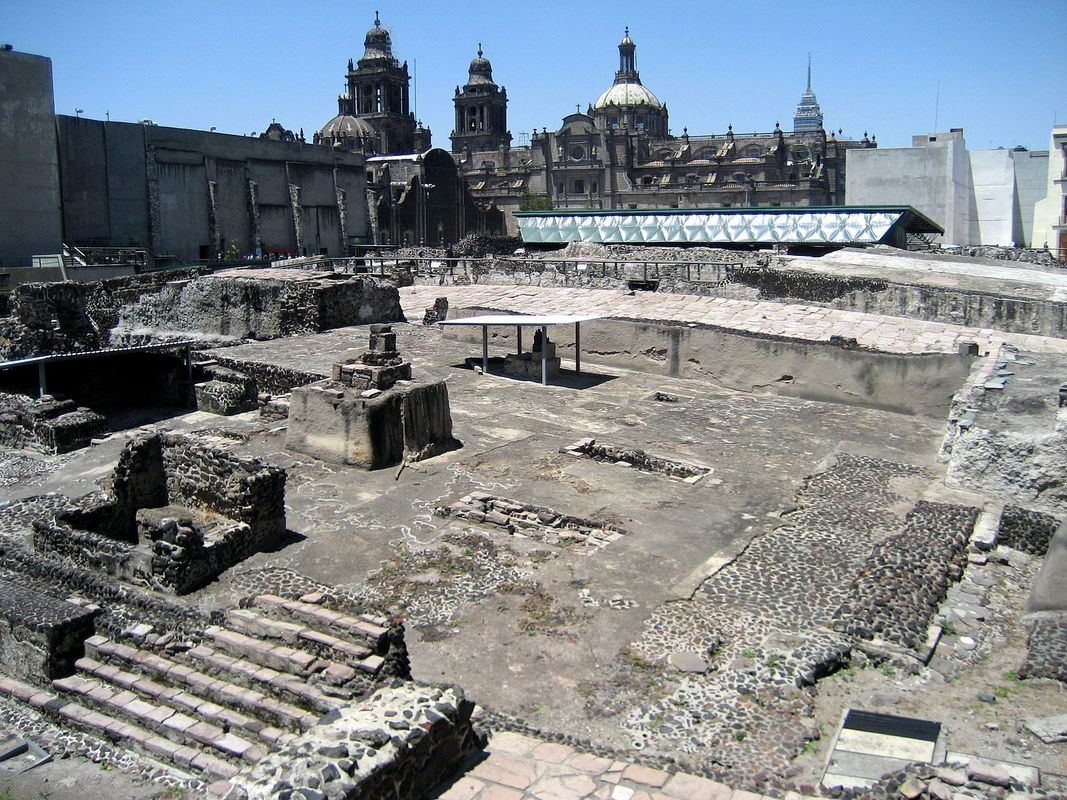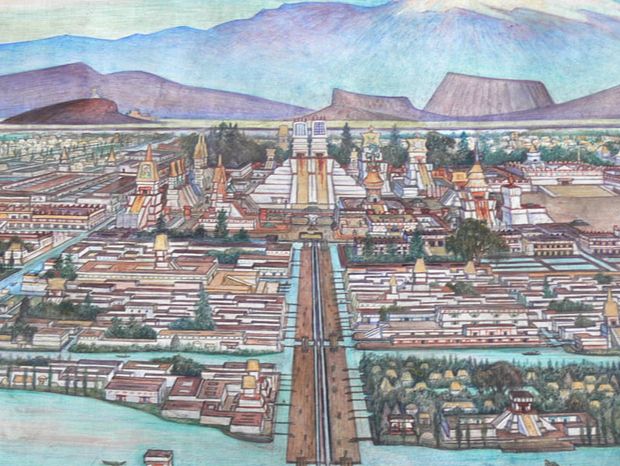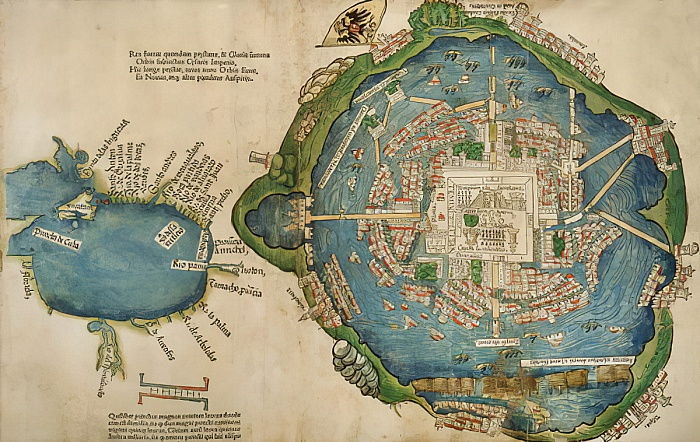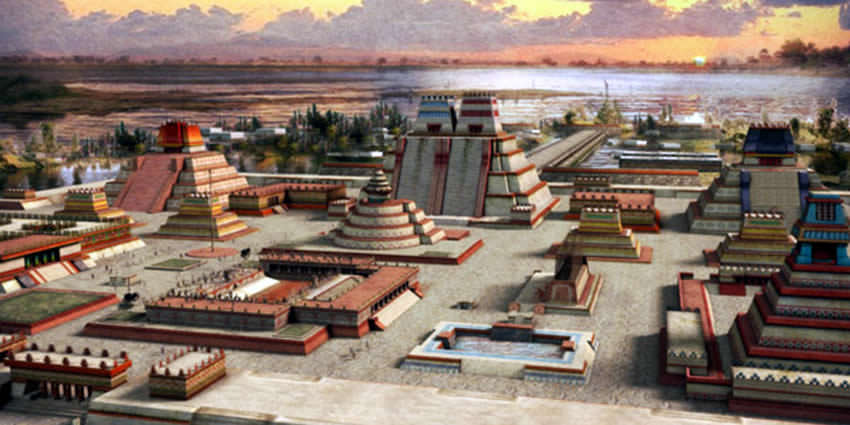Tenochtitlan

Tenochtitlan was the center of the Aztec Empire. The exact date of the founding of the city is unclear, although the date 13 March 1325 was chosen in 1925 to celebrate the 600th anniversary of the city.
The city was completely destroyed in 1521 by the Spanish conquistadores: Mexico City was built on its rubble and over the centuries much of Lake Texcoco was drained.

The origin of the name Tenochtitlan is still an enigma. Traditionally, its name derives from that of the legendary ruler Ténoch. For this reason, there have been researchers speculating on the link of this place with the Biblical figure of Enoch, who supposedly traveled the Earth.
More recent proposals maintain that it is formed with the locative suffix -ti-tlan (“below, at the base of”), joined to a nominal compound. The first part of this compound is undoubted -tetl, or “stone, rock”.
The Aztec civilization grew rapidly and Tenochtitlán became the most important city in Central America. The Aztec dominations became a culturally hegemonic empire over the surrounding regions, technologically advanced and with a strong religious connotation.
The Aztecs had commercial contacts with the Gulf of Mexico, with the Pacific Ocean, and even with the Inca empire.
Tenochtitlán was connected to the mainland by bridges and embankments (the calzadas) and the town planning included a network of roads and canals so that each area could be reached either on foot or by canoe. It was also equipped with a functional aqueduct.
Its structure recalls what some identified as a loyal reconstruction of the mythological Atlantis, as described by Plato, with a Great Pyramid at its center (Templo Mayor), flanked by two smaller pyramids.


In the 1970s, archaeological excavations were undertaken and the ruins of the city were unearthed. Some of the most important ones, such as the Great Pyramid, are open to visitors. Today, the Zócalo (Mexico City’s main square) sits on what was once the Ceremonial Center (Tenochtitlán’s central square and market) and many of the original calzadas correspond to the modern streets of the capital.
Unfortunately, only graphic and plastic models of the entire city exist today, even though they are accurate reconstructions.

